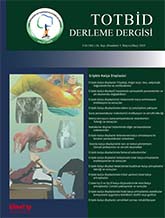
Borderline hip dysplasia (BHD) is a form of developmental hip dysplasia that is characterized by an unbalanced distribution of loads on the hip joint due to decreased acetabular depth. This condition is a common cause of hip pain, especially in young and active individuals, and can predispose patients to early arthritis and chronic pain. Physical examination and radiographic findings are valuable in directing the diagnosis and important in guiding through the surgical decision making process. Hip arthroscopy and periacetabular osteotomies (PAO) are prominent among treatment options. Although there is no gold standard for the surgical treatment of BHD, clinical improvement has been reported after surgery in patients who underwent hip arthroscopy and PAO. Successful clinical results depend on the accurate diagnosis of the underlying pathology and are largely related to the determination of appropriate surgical indications and the use of correct surgical techniques. The surgical decision-making process in this patient group should be planned by making a comprehensive assessment of the patient and by personalizing the treatment. The aim of this review is to present the physical examination findings, radiographic evaluation, conservative treatments, and surgical treatment options used in the diagnosis of patients with borderline hip dysplasia.